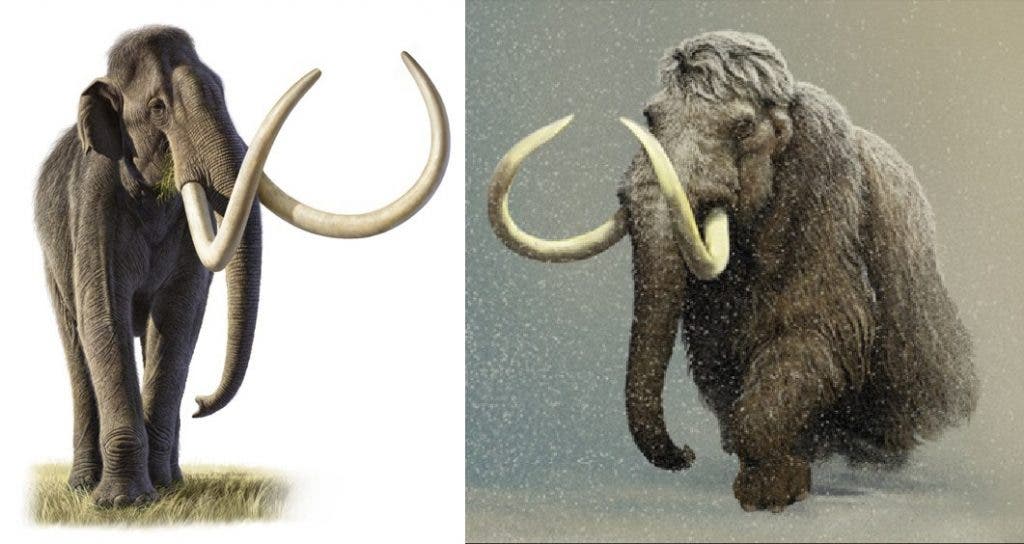North America was home to several mammoth species, but a new study suggests these weren’t that genetically diverse as previously thought. As far as two species are concerned, the Wolly Mammoth and the Columbian mammoth, their genetic makeup was compatible enough to allow interbreeding without miscarriages.
The first mammoths – the earliest representatives of the genus Mammuthus– evolved between four and 5 million years ago in Africa. Early mammoth spread from there north out of Africa, then into Eurasia 3.5 million years, before finally crossing into North America. Many populations became isolated at some point, and these adapted into new species.
The Columbian and Wolly mammoths looks sensibly different, with the former resembling modern elephants while the latter was all covered in hair. Their behaviour and habitat preferences differed too, with the larger Columbian mammoths lurking in the temperate savannas to the south, and the smaller woolly mammoths in the cold steppes of the north. Despite these differences, the two are very closely related, so much so that they could interbred according to Hendrik Poinar, a Professor at McMaster University in Canada.
Poinar and colleagues used the latest DNA sequencing tools at their disposal on samples like fossilized mammoth bone, teeth and feces. Historically, the Columbian and Woolly Mammoths were though to originate from two separate species, but the genetic sequencing tells a different story: the two diverged from the same common ancestor, the Steppe Mammoth.
“Species boundaries can be very blurry. We might find differences in features of the teeth or skeleton that closely correspond to what we think are real species boundaries. But other features may not correspond to those boundaries, suggesting that what we formerly regarded as separate species are in fact not at all,” explains Poinar.
“Mammoths were much better at adapting to new habitats than we first thought — we suspect that subgroups of mammoths evolved to deal with local conditions, but maintained genetic continuity by encountering and potentially interbreeding with each other where their two different habitats met, such as at the edge of glaciers and ice sheets.”
Despite they look sensibly different, there’s no reason to believe at this point that the two species could interbred. One can only wonder what the offspring looked like. This is quite a remarkable adaptability, but alas even that didn’t help. All over the world, mammoths became extinct around 10,000 years largely driven by human hunting and expassion, coupled with climate change, but this is still a debate among scholars. A small population survived on St. Paul Island, Alaska, up until 3750 BC, and the small mammoths of Wrangel Island survived until 1650 BC.










